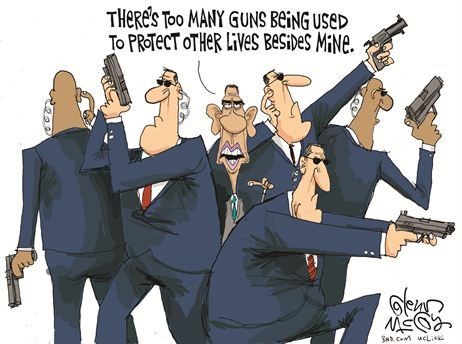
By JEFFREY SCOTT SHAPIRO
In the wake of the horrific elementary-school shootings in Newtown, Conn., last month, many Americans, desperate to do something in response, have decided that much stricter gun control is the answer. Democrats have proposed reinstating the 1994 Assault Weapons Ban, and Sen. Dianne Feinstein has proposed legislation that would even restrict the use of some semiautomatic handguns.
As a former prosecutor in Washington, D.C., who enforced firearms and ammunition cases while a severe local gun ban was still in effect, I am skeptical of the benefits that many imagine will result from additional gun-control efforts. I dislike guns, but I believe that a nationwide firearms crackdown would place an undue burden on law enforcement and endanger civil liberties while potentially increasing crime.
The D.C. gun ban, enacted in 1976, prohibited anyone other than law-enforcement officers from carrying a firearm in the city. Residents were even barred from keeping guns in their homes for self-defense.
Some in Washington who owned firearms before the ban were allowed to keep them as long as the weapons were disassembled or trigger-locked at all times. According to the law, trigger locks could not be removed for self-defense even if the owner was being robbed at gunpoint. The only way anyone could legally possess a firearm in the District without a trigger lock was to obtain written permission from the D.C. police. The granting of such permission was rare.
The gun ban had an unintended effect: It emboldened criminals because they knew that law-abiding District residents were unarmed and powerless to defend themselves. Violent crime increased after the law was enacted, with homicides rising to 369 in 1988, from 188 in 1976 when the ban started. By 1993, annual homicides had reached 454.
The Washington, D.C., Metropolitan Police Department also waged a war on firearms by creating a special Gun Recovery Unit in 1995. The campaign meant that officers were obliged to spend time searching otherwise law-abiding citizens. That same year, the department launched a crackdown called Operation Cease Fire to rid the District of illegal firearms. But after four months, officers had confiscated only 282 guns out of the many thousands in the city.
Civil liberties were endangered. Legislative changes empowered judges to hold gun suspects in pretrial detention without bond for up to 100 days, and efforts were made to enact curfews and seize automobiles found to contain firearms. In 1997, Police Chief Charles Ramsey disbanded the unit so that he could assign more uniformed officers to patrol the streets instead, but the police periodically tried other gun crackdowns over the next decade—with little effect.
In 2007, a panel for the U.S. Court of Appeals for the D.C. Circuit ruled that the city's gun ban was unconstitutional. Senior Judge Laurence H. Silberman wrote in the majority opinion that "the black market for handguns in the District is so strong that handguns are readily available (probably at little premium) to criminals. It is asserted, therefore that the D.C. gun control laws irrationally prevent only law abiding citizens from owning handguns."
The ruling was affirmed the following year by the Supreme Court in District of Columbia v. Heller. Justice Antonin Scalia's majority opinion said that citizens were guaranteed a right to keep firearms that were in common use in their homes for self-defense, but that the government could pass reasonable regulations concerning firearms and ammunition.
Heller created a panic among gun-control advocates because it condoned the ownership of semiautomatic handguns, which are among the most common firearms in use but also the target of many restriction efforts. Supporters of the District gun ban maintained that because a semiautomatic handgun could potentially be converted into a machine gun—a class of firearms not expressly protected by Heller—they were in fact machine guns and therefore not protected by the Second Amendment. In response, Congress threatened to pass a law that specified the legality of semiautomatic handguns in the District. To avoid the embarrassment of being dictated to by Congress, the D.C. Council passed emergency legislation in September 2008 amending the gun ban to allow ownership of semiautomatic handguns for home defense.
Since the gun ban was struck down, murders in the District have steadily gone down, from 186 in 2008 to 88 in 2012, the lowest number since the law was enacted in 1976. The decline resulted from a variety of factors, but losing the gun ban certainly did not produce the rise in murders that many might have expected.
The urge to drastically restrict firearms after mass murders like those at Sandy Hook Elementary School last month and in Aurora, Colo., in July, is understandable. In effect, many people would like to apply the District's legal philosophy on firearms to the entire nation. Based on what happened in Washington, I think that would be a mistake. Any sense of safety and security would be a false one.
Mr. Shapiro was a criminal prosecutor for the District of Columbia from 2007-09.
No comments:
Post a Comment